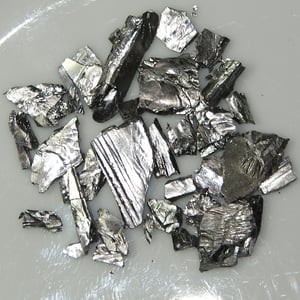First and only long-acting C5 complement inhibitor offers patients with AQP4 Ab+ NMOSD the potential to live relapse-free
Unprecedented relapse risk reduction observed in CHAMPION-NMOSD trial underscores how Ultomiris may redefine patient journey for rare neurological disease
Ultomiris (ravulizumab-cwvz) has been approved in the United States (US) as the first and only long-acting C5 complement inhibitor for the treatment of adult patients with anti-aquaporin-4 (AQP4) antibody-positive (Ab+) neuromyelitis optica spectrum disorder (NMOSD).1
The approval by the US Food and Drug Administration (FDA) was based on positive results from the CHAMPION-NMOSD Phase III trial, which were published in the Annals of Neurology.2 In the trial, Ultomiris was compared to an external placebo arm from the pivotal Soliris PREVENT clinical trial.
Ultomiris met the primary endpoint of time to first on-trial relapse as confirmed by an independent adjudication committee. Zero relapses were observed among Ultomiris patients with a median treatment duration of 73 weeks (relapse risk reduction: 98.6%, hazard ratio (95% CI): 0.014 (0.000, 0.103), p<0.0001).2
NMOSD is a rare and debilitating autoimmune disease that affects the central nervous system (CNS), including the spine and optic nerves.3-5 Most people living with NMOSD experience unpredictable relapses, characterised by a new onset of neurologic symptoms or worsening of existing neurologic symptoms, which tend to be severe and recurrent and may result in permanent disability.6-8 The diagnosed prevalence of adults with NMOSD in the US is estimated at approximately 6,000.9-11
Sean J. Pittock, MD, Director of Mayo Clinic’s Center for Multiple Sclerosis and Autoimmune Neurology and of Mayo’s Neuroimmunology Laboratory and lead primary investigator in the CHAMPION-NMOSD trial, said: “C5 inhibition has been proven to offer efficacy in reducing the risk of NMOSD relapses by blocking the complement system, a part of the immune system, from attacking healthy cells in the spinal cord, optic nerve and brain. With today’s FDA approval, patients now have the option of a long-acting C5 inhibitor treatment that showed zero relapses in the pivotal CHAMPION-NMOSD trial, supporting the primary goal of relapse prevention in treating NMOSD.”
Marc Dunoyer, Chief Executive Officer, Alexion, said: “Alexion has been at the forefront of innovation in NMOSD, striving to offer patients a future without fear of life-altering or even fatal relapses. Building on the established efficacy of C5 inhibition for people living with AQP4 Ab+ NMOSD, we are proud to deliver a transformative, long-acting treatment option that has the potential to eliminate relapses with a convenient dosing schedule every eight weeks. We are grateful to the NMOSD community for their ongoing collaboration and input, which enables us to advance science for rare diseases.”
Overall, the safety and tolerability of Ultomiris in the CHAMPION-NMOSD trial were consistent with previous clinical studies and real-world use, and no new safety signals were observed. The most common adverse events (AEs) were COVID-19, headache, back pain, arthralgia and urinary tract infection.2
Ultomiris is also approved for certain adults with NMOSD in Japan and the European Union (EU). Regulatory reviews are ongoing in additional countries.
NMOSD
NMOSD is a rare disease in which the immune system is inappropriately activated to target healthy tissues and cells in the CNS.3,4 Approximately three-quarters of people with NMOSD are anti-AQP4 Ab+, meaning they produce antibodies that bind to a specific protein, aquaporin-4 (AQP4).5,12 This binding can inappropriately activate the complement system, which is part of the immune system and is essential to the body’s defence against infection, to destroy cells in the optic nerve, spinal cord and brain.3,13,14
It most commonly affects women and begins in the mid-30s. Men and children may also develop NMOSD, but it is even more rare.15,16 People with NMOSD may experience vision problems, intense pain, loss of bladder/bowel function, abnormal skin sensations (e.g., tingling, prickling or sensitivity to heat/cold) and impact on coordination and/or movement.5-7,17,18 Most people living with NMOSD experience unpredictable relapses, also known as attacks. Each relapse can result in cumulative disability including vision loss, paralysis and sometimes premature death.6-8 NMOSD is a distinct disease from other CNS diseases, including multiple sclerosis. The journey to diagnosis can be long, with the disease sometimes misdiagnosed.19-21
CHAMPION-NMOSD
CHAMPION-NMOSD is a global Phase III, open-label, multicentre trial evaluating the safety and efficacy of Ultomiris in adults with NMOSD. The trial enrolled 58 patients across North America, Europe, Asia-Pacific and Japan. Participants were required to have a confirmed NMOSD diagnosis with a positive anti-AQP4 antibody test, at least one attack or relapse in the twelve months prior to the screening visit, an Expanded Disability Status Scale Score of 7 or less and body weight of at least 40 kilograms at trial entry. Participants could stay on stable supportive immunosuppressive therapy for the duration of the trial.22
Due to the potential long-term functional impact of NMOSD relapses and available effective treatment options, a direct placebo comparator arm was precluded for ethical reasons. The active treatment was compared to an external placebo arm from the pivotal Soliris PREVENT clinical trial.
Over a median treatment duration of 73 weeks, all enrolled patients received a single weight-based loading dose of Ultomiris on Day 1, followed by regular weight-based maintenance dosing beginning on Day 15, every eight weeks. The primary endpoint was time to first on-trial relapse, as confirmed by an independent adjudication committee. The end of the primary treatment period could have occurred either when all patients completed or discontinued prior to the Week 26 visit and two or more adjudicated relapses were observed, or when all patients completed or discontinued prior to the Week 50 visit if fewer than two adjudicated relapses were observed. In the trial, there were zero adjudicated relapses, so the end of the primary treatment period occurred when the last enrolled participant completed the 50-week visit.
Patients who completed the primary treatment period were eligible to continue into a long-term extension period, which is ongoing.
Ultomiris
Ultomiris (ravulizumab-cwvz), the first and only long-acting C5 complement inhibitor, provides immediate, complete and sustained complement inhibition. The medication works by inhibiting the C5 protein in the terminal complement cascade, a part of the body’s immune system. When activated in an uncontrolled manner, the complement cascade over-responds, leading the body to attack its own healthy cells. Ultomiris is administered intravenously every eight weeks in adult patients, following a loading dose.
Ultomiris is approved in the US, EU, Japan and other countries for the treatment of certain adults with generalised myasthenia gravis (gMG).
Ultomiris is also approved in the US, EU, Japan and other countries for the treatment of certain adults with paroxysmal nocturnal haemoglobinuria (PNH) and for certain children with PNH in the US and EU.
Additionally, Ultomiris is approved in the US, EU, Japan and other countries for certain adults and children with atypical haemolytic uraemic syndrome to inhibit complement-mediated thrombotic microangiopathy (aHUS).
Further, Ultomiris is approved in the US, EU and Japan for the treatment of certain adults with neuromyelitis optica spectrum disorder (NMOSD).
As part of a broad development programme, Ultomiris is being assessed for the treatment of additional haematology and neurology indications.
Alexion
Alexion, AstraZeneca Rare Disease, is the group within AstraZeneca focused on rare diseases, created following the 2021 acquisition of Alexion Pharmaceuticals, Inc. As a leader in rare diseases for more than 30 years, Alexion is focused on serving patients and families affected by rare diseases and devastating conditions through the discovery, development and commercialisation of life-changing medicines. Alexion focuses its research efforts on novel molecules and targets in the complement cascade and its development efforts on haematology, nephrology, neurology, metabolic disorders, cardiology and ophthalmology. Headquartered in Boston, Massachusetts, Alexion has offices around the globe and serves patients in 70 countries.
AstraZeneca
AstraZeneca (LSE/STO/Nasdaq: AZN) is a global, science-led biopharmaceutical company that focuses on the discovery, development, and commercialisation of prescription medicines in Oncology, Rare Diseases, and BioPharmaceuticals, including Cardiovascular, Renal & Metabolism, and Respiratory & Immunology. Based in Cambridge, UK, AstraZeneca operates in over 100 countries and its innovative medicines are used by millions of patients worldwide.
References
1. Ultomiris (ravulizumab-cwvz) US prescribing information; 2024.
2. Pittock, SJ, et al. Ravulizumab in aquaporin-4-positive neuromyelitis optica spectrum disorder. Ann Neurol, 2023; 93: 1053-1068.
3. Wingerchuk DM, et al. The spectrum of neuromyelitis optica. Lancet Neurol. 2007;6(9):805-815.
4. Wingerchuk DM. Diagnosis and treatment of neuromyelitis optica. Neurologist. 2007;13(1):2-11.
5. Hamid SHM, et al. What proportion of AQP4-IgG-negative NMO spectrum disorder patients are MOG-IgG positive? A cross sectional study of 132 patients. J Neurol. 2017;264(10):2088-2094.
6. Wingerchuk DM, et al. Neuromyelitis optica. Curr Treat Options Neurol. 2008;10(1):55-66.
7. Kitley J, et al. Prognostic factors and disease course in aquaporin-4 antibody-positive patients with neuromyelitis optica spectrum disorder from the United Kingdom and Japan. Brain. 2012;135(6):1834-1849.
8. Jarius S, et al. Contrasting disease patterns in seropositive and seronegative neuromyelitis optica: a multicentre study of 175 patients. J Neuroinflammation. 2012;9:14.
9. Papp V, et al. A population-based epidemiological study of neuromyelitis optica spectrum disorder in Hungary. Eur J Neurol. 2020;27(2):308-317.
10. Flanagan EP, et al. Epidemiology of aquaporin-4 autoimmunity and neuromyelitis optica spectrum. Ann Neurol. 2016;79:775-783.
11. Bukhari W, et al. Incidence and Prevalence of NMOSD in Australia and New Zealand. J Neurol Neurosurg Psychiatry. 2017;88(8):632-638.
12. Wingerchuk DM, et al. The clinical course of neuromyelitis optica (Devic’s syndrome). Neurology. 1999;53(5):1107-1114.
13. Cossburn M, et al. The Prevalence of Neuromyelitis Optica in South East Wales. Eur J Neurol. 2012;19(4): 655-659.
14. Papadopoulos MC, et al. Treatment of neuromyelitis optica: state-of-the-art and emerging therapies. Nat Rev Neurol. 2014;10(9):493.
15. Takata K, et al. Aquaporins: water channel proteins of the cell membrane. Prog Histochem Cytochem. 2004;39(1):1-83.
16. Mori M, et al. Worldwide prevalence of neuromyelitis optica spectrum disorders. J Neurol Neurosurg Psychiatry. 2018;89(6):555-556.
17. Quek AML, et al. Effects of age and sex on aquaporin-4 autoimmunity. Arch Neurol. 2012;69:1039-43.
18. Tüzün E, et al. Enhanced complement consumption in neuromyelitis optica and Behcet’s disease patients. J Neuroimmunol. 2011;233(1-2):211-215.
19. Kuroda H, et al. Increase of complement fragment C5a in cerebrospinal fluid during exacerbation of neuromyelitis optica. J Neuroimmunol. 2013;254(1-2):178-182.
20. Jarius S, et al.. The History of Neuromyelitis Optica. J Neuroinflammation. 2013;10, 797.
21. Mealy MA, et al. Assessment of Patients with Neuromyelitis Optica Spectrum Disorder Using the EQ-5D. Int J MS care. 2019;21(3), 129-134.
22. ClinicalTrials.gov. An Efficacy and Safety Study of Ravulizumab in Adult Participants With NMOSD. NCT Identifier: NCT04201262.



































